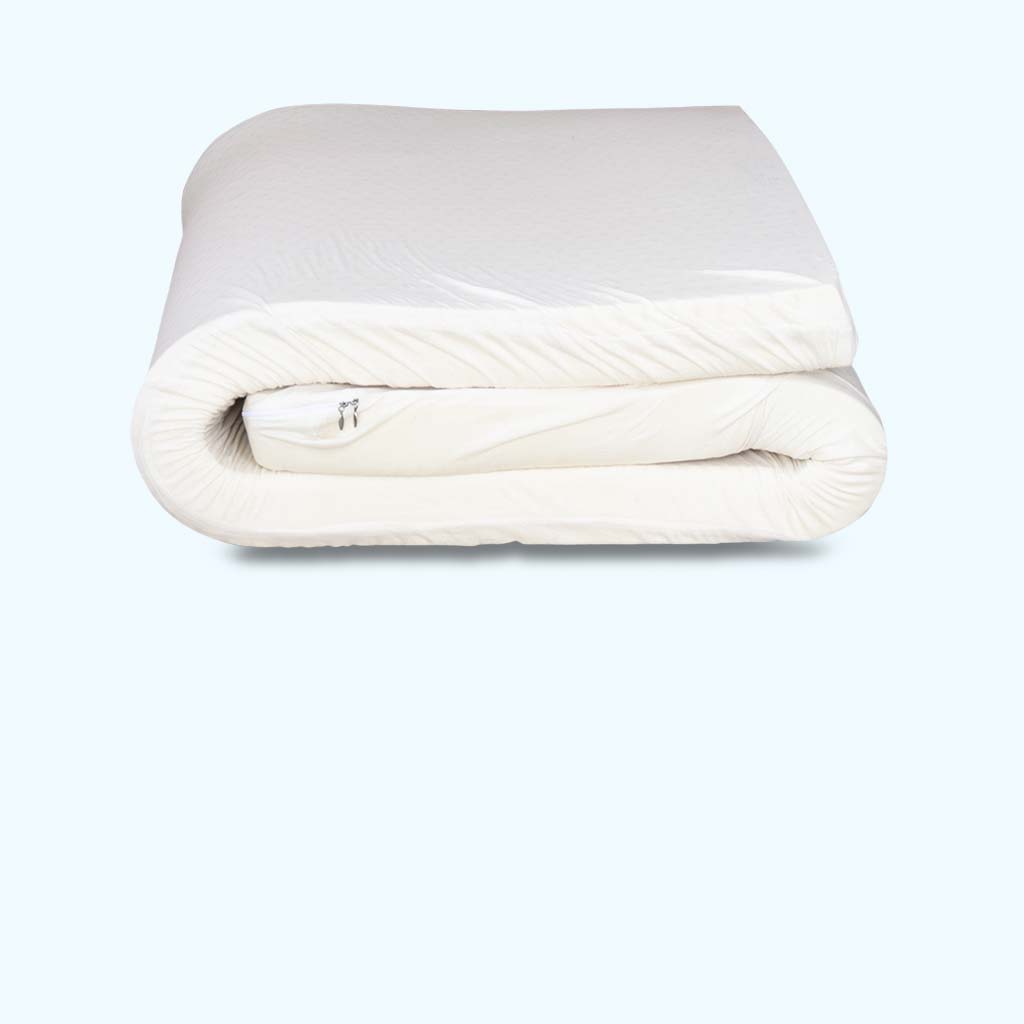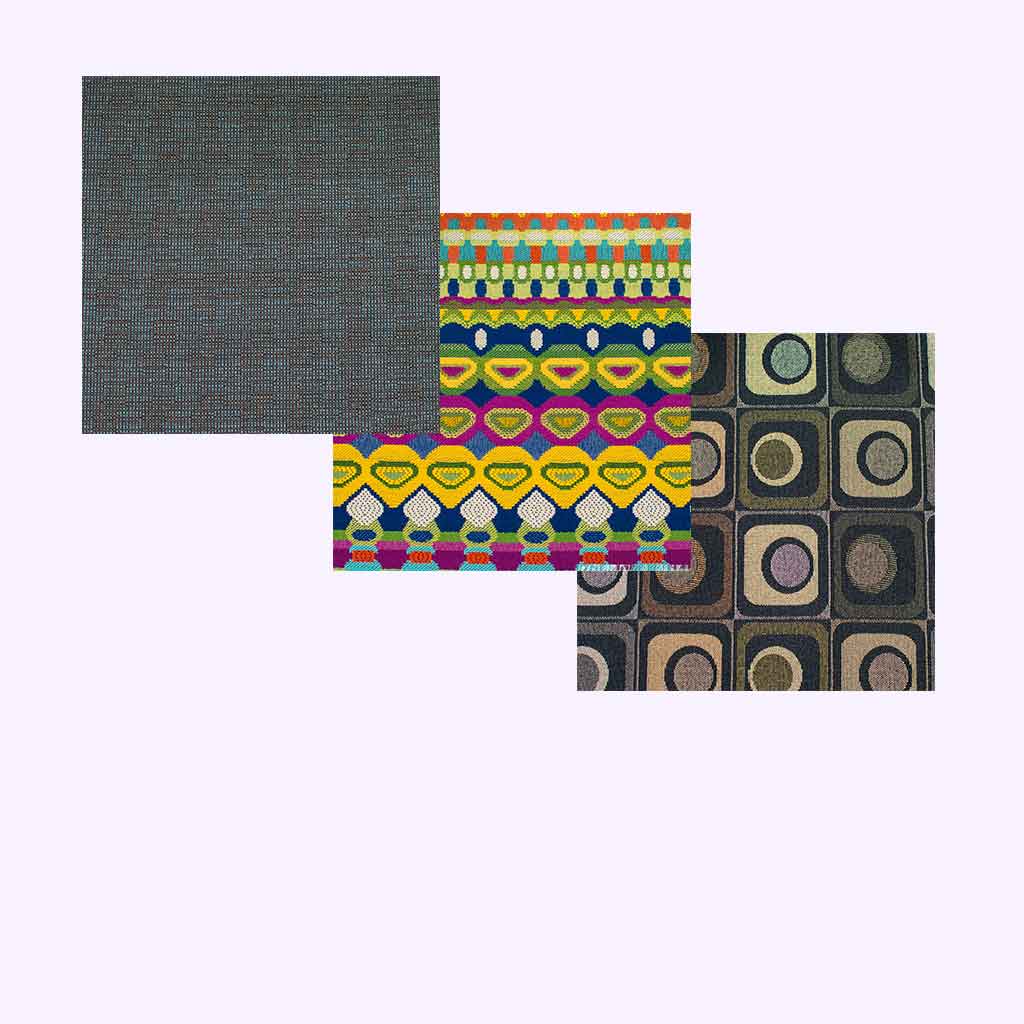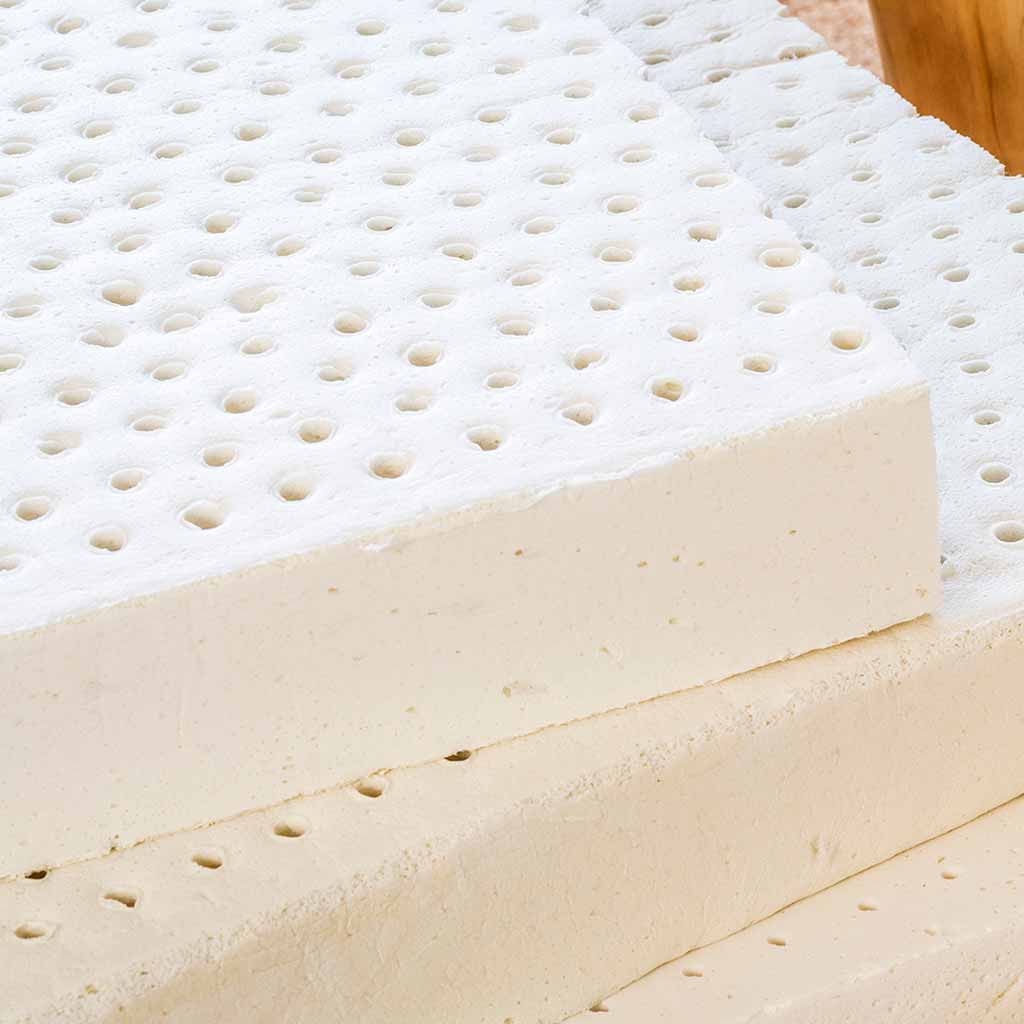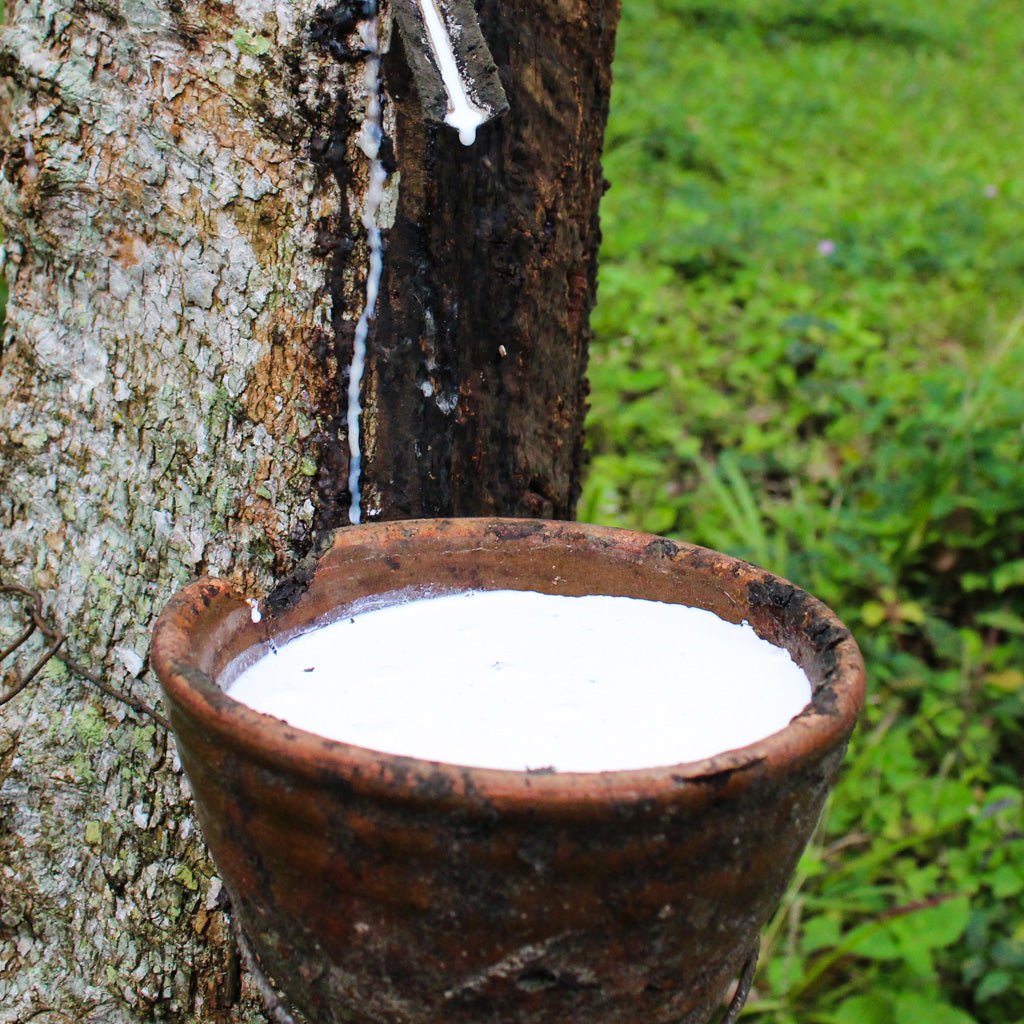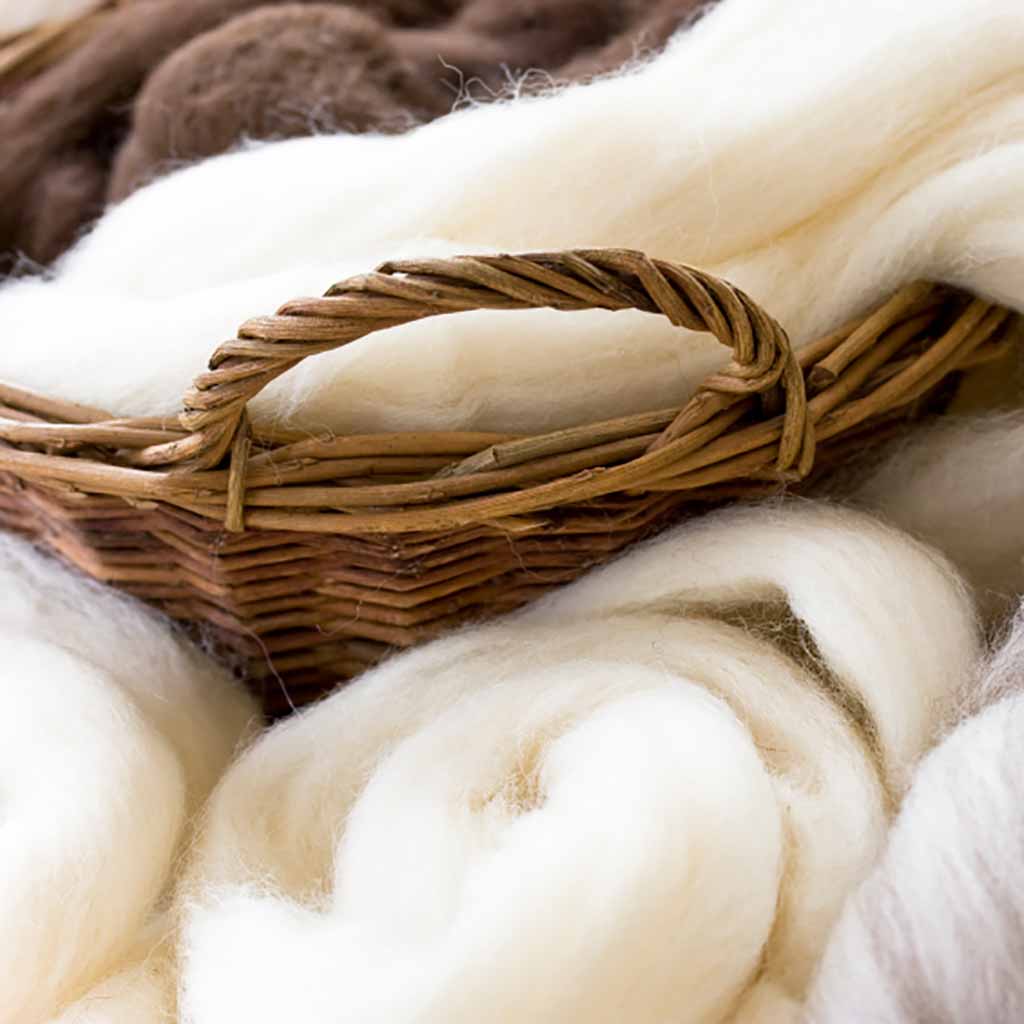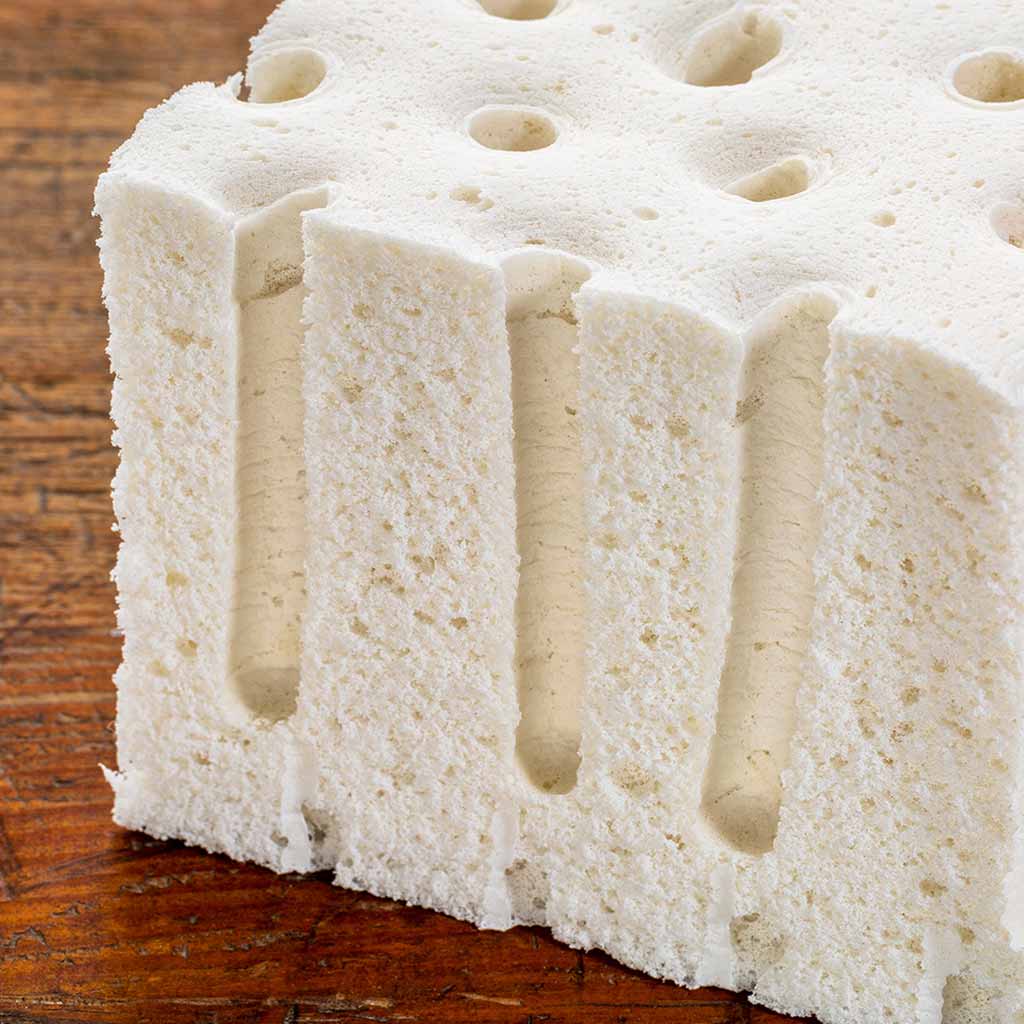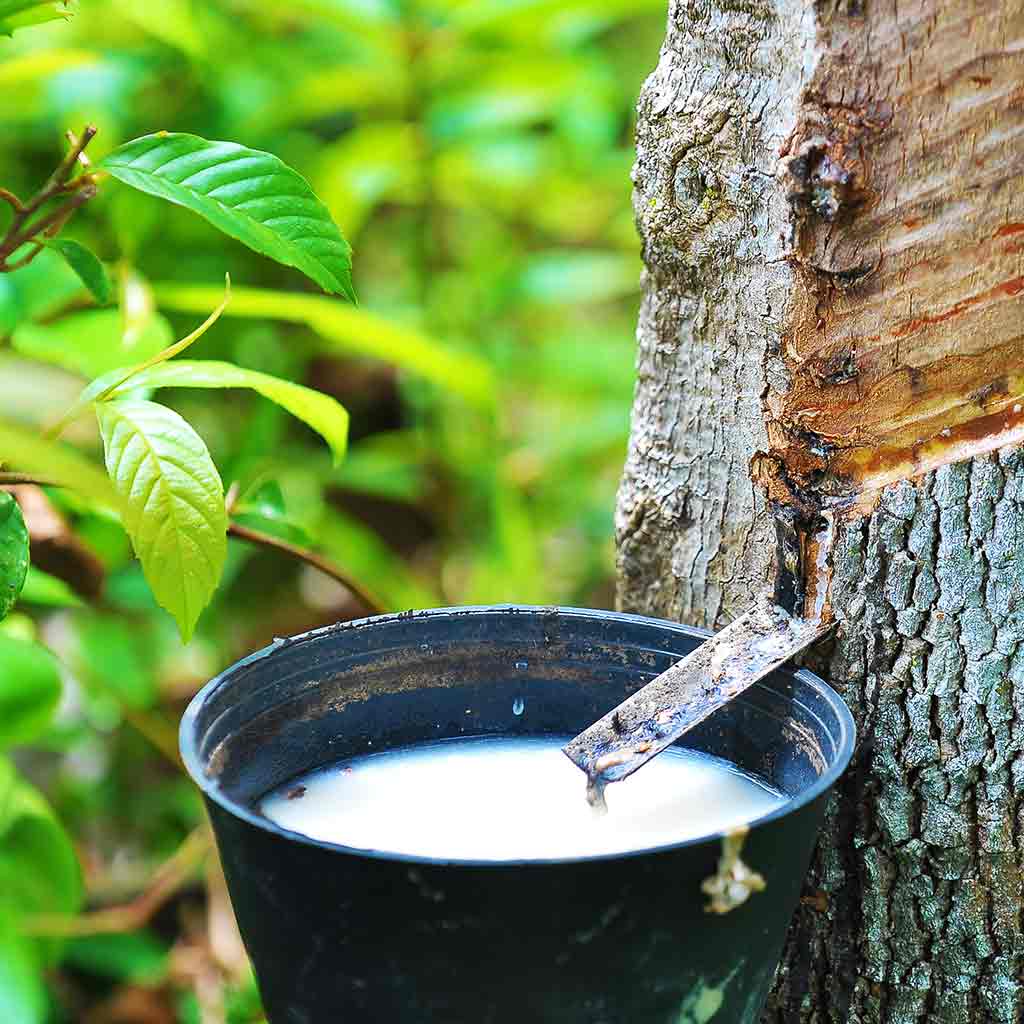Rubber is everywhere—from car tires to mattresses, medical gloves to sneakers—but did you know there are many different types of rubber, each tailored for specific applications? This post will break down the basics of rubber types and, more specifically, how they relate to our specialty, mattresses and bedding.
Natural Rubber
Natural rubber (NR) is derived from Hevea brasiliensis, a species of rubberwood that is native to Amazon rainforests in South America. Throughout most of the 19th century, the majority of natural rubber (NR) came from here; however, over 90% of the world's natural rubber now comes from plantations in Southern Asia.
This source shift can be traced back to that late 19th century when British explorer Henry Wickham smuggled seeds from Brazil to London. From there seedlings were distributed throughout British Asian colonies – including India, Sri Lanka and Malaysia. Due to their climate and geographic profile, Southern Asia was the perfect location for these new rubber plantations.
Synthetic Rubbers
When demand outgrew the natural rubber supply, especially during World War II, scientists developed synthetic rubber. These man-made materials, typically derived from petroleum-based monomers, are now used in thousands of different applications.
Styrene-Butadiene Rubber (SBR) – This cost-effective alternative to natural rubber has good abrasion resistance and stability. It’s the most common synthetic rubber and the only one used in mattresses.
Nitrile Rubber (NBR) - Used in fuel hoses, gaskets, and seals as it has excellent resistance to oils and fuels
Ethylene Propylene Diene Monomer (EPDM) - Weather and ozone resistance for roofing, seals and automotive parts.
Neoprene (Polychloroprene) - Balanced chemical, oil, and weather resistance for use in wetsuits, hoses, and belts
Silicone Rubber - Highly flexible in extreme temperatures and ideal for medical, food-grade, and electronic applications
Other Rubber Types
Latex, in its most natural liquid state, has an odour. To combat the smell, a new product called Natural Odourless Rubber (ONR) was created. ONR is created by mixing Natural Latex with sodium hypochlorite and formaldehyde to prevent the natural degradation that causes odours. This type of rubber is almost never used in latex mattresses and is forbidden under the GOLS standard. We deep dive further into the subject here: What’s that smell? Natural aromas explained.
Rubber Additives
Rubber can and has been mixed with thousands of different additives. Some are necessary components in the manufacturing process, others are related to specific performance applications, and some are filler materials meant to reduce costs.
Vulcanizing Agents - All latex must be vulcanized (baked) as that’s the process that cross-links rubber molecules to create a solid foam. The most common mix used for mattress latex is sulphur, zinc oxide, and a fatty acid such as stearic acid. You cannot create a latex foam without these.
Fillers - These are used to add consistency to rubber mixes and reduce costs. You want to avoid filler-laden latex products as they reduce the elasticity (performance) of the latex rubber. Filler materials are banned under the GOLS standards.
Flame Retardants - Latex can be mixed with graphite to create a naturally flame-retardant latex product. Graphite latex is very dense, has a distinctive grey colour and can certified under the GOLS standard.
Plasticizers - Improve flexibility and workability, especially in cold temperatures. These are used in industrial applications and not mattresses.
Antioxidants and Antiozonants- Prevent degradation from oxygen, ozone, and sunlight, extending rubber’s life. Again, these are used in industrial applications and not mattresses, so it’s important to keep your latex covered to maximize its lifespan. It’s also why we double-cover our latex mattresses.
Colorants and Dyes - These are only used in synthetic latex products and will be quite obvious.
How Natural Rubber Is Harvested
While rubberwood trees grow relatively quickly, it is five to seven years before one can be tapped for its latex. However, if this is done properly, a Hevea tree can produce latex for as long as 30 years. Tapping is done seasonally to preserve the long-term health of the rubber trees.
Many people refer to latex as the sap of the rubber tree. This is incorrect, though. Raw latex is a milky white substance that comes from the lactiferous vessels in the bark of the tree, while sap comes from the deeper cambium layer.
The tapping of a rubber tree is done twice a week, before dawn. It takes a very skilled tapper to tap a rubber tree correctly. The tapper must make a very careful spiral incision that is deep enough to open the lactiferous vessels. But it must not be so deep that it damages the cambium layer, as this can cause so-called callouses and swelling.
The raw latex extracted from the actual tree is known as field latex. This is collected several hours after the tapping has been done and then sent to a local processing facility. Field latex is a combination of raw latex, water, and other natural by-products. The latex-to-water ratio varies in field latex, so it is always run through a centrifuge to concentrate the liquid rubber to a uniform ISO 9001 standard.
Although it doesn’t eliminate them completely, our latex is run through the centrifuge process several times to lower the natural proteins that can lead to allergies. The latex that has gone through this extra step is known as low-protein latex and reduces the chances of developing a latex allergy from mattresses to almost zero. However, if you have an existing latex allergy, you should consult with a medical professional before buying a latex mattress.
The final concentrated latex is known as Cenex and comprises a 60/40 latex-to-water ratio. Once all the field latex has been concentrated into a uniform mix, it is ready to be converted to foam rubber.
The Manufacturing Process
Dunlop and Talalay refer to the two different processes used to turn liquid latex into solid foam. In general terms, the Dunlop process is the original process of manufacturing latex rubber and is best suited for organic and 100% natural latex. The Talalay process was invented in response to the introduction of synthetic latex and is best suited for less dense products that depend on the more uniform physical properties of synthetic latex. This is why the vast majority (over 95%) of Talalay contains 60%-70% styrene-butadiene rubber (SBR). We go into the manufacturing process in more depth here: Dunlop vs Talalay Latex.
Regardless of the process, all latex can be made with or without synthetic latex or filler materials. That’s why it’s always important to determine what type of rubber is actually being used. Admittedly, we’re partial to organic Dunlop latex as it’s the most natural and supportive latex foam and the only product guaranteed free of unnecessary additives. However, natural or synthetic-based latex products may also work for you. It is always best to talk to an expert mattress fitter (not an influencer) to see what latex product is best for you.

